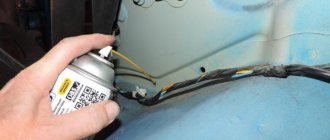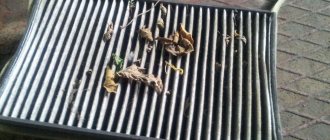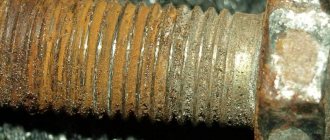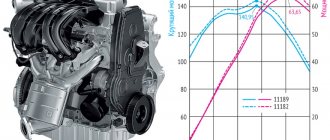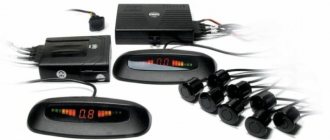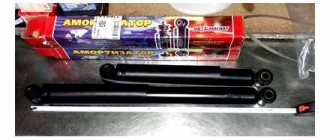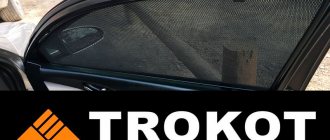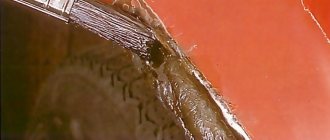Features of the autopreservative Movil
Operating principle and composition of the mixture
Since its inception, the formula of the autopreservative has not changed much - it is still a film-forming inhibited petroleum composition (PINS). The type of converter used in the mixture varies by manufacturer. The functional side of the composition is as follows:
- Penetration of hydrated iron oxide into micropores due to the presence of penetrate inhibitors in the composition.
- Transformation of oxides into a non-corrosive configuration of iron.
- Formation of a protective surface film based on polymer resins.
What does it consist of?
The last factor excludes the access of oxygen and moisture, due to which further oxidation of the part is impossible. You can understand what Movil for cars is and how to use this product after studying its composition. The overall characteristics of the mixture are formed by its main “ingredients”:
- Drying oil.
- White Spirit.
- Inhibitors.
- Kerosene.
- Engine oil.
- Rust converter.
You can find out which converter is present in the mixture from the information on the can. For example, the Agat-Avto concern has used tannin, which reformats oxides into iron tannate.
Who produces?
On the shelves of domestic auto stores you most often find Movil with a converter from the following manufacturers:
- Astrochem - Antiruster aerosol with a rust converter.
- Agat-Auto - Movil corsenvant with converter.
- Development of PKF - liquid and aerosol HH MasterWax with converter.
- Eltrans is an aerosol with a converter.
The product packaged in cans is half the price of aerosol packaging. If you plan to treat the body with liquid Movil using a brush, then there is an opportunity to save money. On the other hand, there are places where you can’t reach with a simple brush, and then you can’t do without an aerosol.
You can still find car owners who do not recognize anything other than Cannon Tallow, a preservative petroleum lubricant. They justify their choice by reliability and low cost. However, beginners are faced with the problem of preparing the mixture, since it is difficult to process the internal cavities of a car with a thick consistency, so there is no reason for them to choose “pussalo”.
Which Movil is cheaper?
Today, Movil aerosols, which contain a rust converter, are in approximately the same price range - about 300 rubles per liter. The final price may vary depending on the region where auto chemicals are sold and the amount of anticorrosive agent purchased. Traditionally, products in small packages are a little more expensive.
Liquid products cost about half as much as aerosols (about 150 rubles per liter). If you plan to apply the product to the surface to be protected using a brush, then there is an opportunity to save money. The liquid can also be applied with a sprayer.
We recommend: Waste-free cooking: 7 options for using onion peels at home
Which body cavities need Movil treatment and why?
There is a misconception that the underbody of a vehicle can be treated with a preservative. This approach is irrational, since only anti-gravel coating can withstand mechanical stress. Anticorrosive agent works effectively in limited places where there is a high probability of corrosion pockets:
- Thresholds. The holes in them allow moisture to penetrate and, as a result, rust to form.
- Front roof pillars. Condensation that occurs due to temperature differences leads to corrosion processes over time.
- Spars and space between the wheel arch and rear wing.
- Inner plane of the trunk. Often the compartment is lined with felt material, which absorbs and retains moisture well.
- Floors and interior doors. Moisture and condensation quite often accumulate in these places.
- Door seal mounting locations. Water accumulates under the rubber and provokes the formation of rye and mold.
Technology: how to use Movil solution to protect cars and precautions
To complete the work, it is important to select the consistency of the mixture by adding a solvent. It must be remembered that the fluidity of the solution depends on the ambient temperature; 20°C is considered optimal. The treatment procedure using an aerosol looks much simpler, because the mixture is already in working condition.
Treatment of easily accessible areas
For those who are interested in how to use Movil anticorrosive for cars in easily accessible places, you should familiarize yourself with the following points:
- Prepare the surface by removing dirt and loose layers of oxides.
- Degrease the work area and dry it.
- Apply the first layer of anticorrosive with a roller or brush. If an aerosol is used, the can should be shaken several times beforehand. The solution is fed through the spray head.
- Dry and apply a second and, if necessary, a third layer with intermediate drying.
- The coating dries completely within 24 hours; it is not advisable to operate the car during this period.
Important! If preservative gets on the surface of the paintwork, it must be quickly wiped off with a cleaner for bitumen stains.
Treatment of hidden cavities
The operation has its own characteristics and proceeds according to the following scheme:
- Remove elements that interfere with the work process.
- If there are drainage holes, rinse the cavities thoroughly.
- Treat the cavity with a rust converter and rinse after a while using an alkaline reagent.
- Dry the closed cavity with a stream of warm air.
- Connect the flexible tube from the kit to the cylinder; if the cylinder is designed to work with a gun, then install it in its regular place.
- Insert the end of the tube or gun into the technological hole and spray the anticorrosive agent.
Movil for cars: how to use it correctly
Movil for cars: how to use it is quite simple to understand - you just need to apply it to arches, hidden cavities, welds, anywhere where moisture can linger. But before applying, you need to carefully treat those places where rust has already appeared. Because even if you apply Movil to a rusty part, the rust will still continue to develop, but more slowly.
But Movil has a rather specific smell, so it’s better not to treat anything with it in the salon. What color is Movil - when it dries it turns dark brown. When using Movil, it is important to thoroughly dry the surface so that there is no moisture there at all, otherwise the moisture will simply remain under the protective layer, and perhaps corrosion will begin to appear under the protective layer, which will not lead to anything good.
When the surface is prepared, you can apply Movil either by spraying or coating, depending on the case, you need to select the correct consistency of Movil using a solvent. If the mixture turns out to be very thick, it may not penetrate into some seams, and it will also lie unevenly. If the mixture turns out to be very liquid, it may not stay on the surface. Also, the consistency depends on the temperature, so it is best to apply Movil in a warm room. If you do work in the heat, the material will become more liquid and the smell will be very pungent, so in the heat you need to add less solvent.
Movil aerosol is available for sale; it has the correct consistency already selected and does not require application devices. In the case of an aerosol, anti-corrosion protection must be done in several layers, because the thickness of one layer is quite small. The durability of this layer is also less, since the spray here is quick-drying.
If hidden cavities are found, they must be treated by extrusion without spraying; for this you can use a special metal tube. The main thing is to achieve an even distribution of Movil.
Let dry
In addition, after Movil has been applied to the body, you must wait at least one day for Movil to thicken. Moreover, there is no need to dry anything additional. It is not necessary to wait until the substance has completely dried, because Movil for cars should not dry out, it simply thickens, becomes elastic, but not dry.
Which parts of the car are recommended to be treated with Movil:
- door pockets,
- arch cavities;
- spars;
- hood and trunk;
- headlight housings;
- floor thresholds;
- body pillars.
But open surfaces that are exposed to the external environment, such as the bottom of a car, do not need to be treated with Movil, since it is better to use an anti-gravel coating for this and provide full anti-corrosion protection.
It is believed that Movil contains a rust converter, so the surface does not need to be pre-treated. But there is not much of this converter there, so it is better to treat the body before using Movil - completely remove the rust, and then apply Movil.
Safety measures when performing work
An indispensable condition is effective ventilation and fire safety; the measures are the same as when painting wheel rims. If any preservative gets on the skin and, especially, in the eyes, you should immediately rinse them with clean water and consult a doctor. They say that the mixture is safe for rubber products in the form of seals and for paintwork, but this is an absolute misconception - practice has proven that dried stains are practically impossible to remove.
To prevent unpleasant stains on the floor in the garage, the car should be placed in the sun after 24 hours or in a room with a temperature of at least 25°C. Under the influence of high temperature, excess solution will drain through the service openings, after which they must be closed.
As a result, we can confidently state that the car preservative is still capable of increasing the level of anti-corrosion protection of the car. Subject to Movil technology and safety rules, such processing is reliable and very affordable financially.
In addition to the main breakdowns of vehicle parts and components, there is also the natural destruction of metal, which occurs upon contact with oxygen. If you do not stop the rotting of the body, it begins to spread over the entire area, so if pockets of corrosion are detected, they should be eliminated. Today we will analyze such a rust protection product - Movil for cars.
- What is Movil?
- Types of Movil.
- Body preparation.
- How to apply Movil correctly?
- What precautions should you take?
- Conclusion.
- Video.
Safety during use
When working with Movil, you need to ensure that there is good ventilation, and remember that Movil contains components that are easily flammable. Also, do not allow Movil to come into contact with the skin or other parts of the body.
It is necessary to ensure that Movil does not come into contact with rubber or plastic parts, because it will have a negative effect on them. You also need to remember that a stain of frozen Movil is difficult to remove later, so you need to apply the substance carefully.
It also happens that excess substances can drain from the car onto the garage floor. Therefore, you can first lay down oilcloth to keep the floor clean.
It is also advisable to check the condition of the car’s anti-corrosion coating every few months. If it is noticed that the Movil has hardened and is no longer elastic, this means that the treatment must be repeated, and the composition must be made more liquid. But the old layer must be removed using a solvent or using a product that removes bitumen stains.
If you follow all the rules and recommendations for using Movil, you can achieve excellent protection of the car body from corrosion for a fairly reasonable price.
And then a video about how you can move a car with your own hands:
What is Movil
A problem such as metal destruction is easier to prevent than to fix later. A product called Movil is one of the popular ones. Many people use it, but it turns out that many do not know how to apply it correctly. The quality of the work performed depends on the technology for applying the anti-corrosion composition.
Movil is any anti-corrosion substance. It must contain the following mandatory substances:
- engine oil;
- drying oil;
- components that protect against corrosion.
If the anti-rust product contains other substances, has a different composition, then this product is no longer Movil. The original Movil product was developed several decades ago.
Where did the name Movil come from? Answer: because this substance was invented by chemists from Moscow and Vilnius.
Due to its low price and high quality, Movil has been used for more than 50 years to prevent and eliminate corrosion of metal car bodies.
In one issue I published material about Gravitex for cars. Look, this remedy is also effective. The question of how to choose this substance and how to use it was discussed.
There is also a technology to isolate the metal surface from oxygen in the air. This can be done either with paints or film. For example, there is a film against chipping.
Types of Movil
Today in the car market you can find three types of Movil according to the packaging sold:
- Aerosol. This is the most popular type because it is very convenient to apply by spraying. The aerosol is produced in small quantities, the jar has a volume of 250 to 300 ml. The cost of one can is up to 700 rubles. But, if you process the entire body, then in the end you will need several thousand rubles for Movil. One of the disadvantages of aerosol Movil is that when applying it, the can must be kept vertically all the time.
- In a liquid state. This is the cheapest type. Sold in a 3 liter canister. Depending on who the manufacturer is, the price is 300-400 rubles. Liquid, as we know, easily penetrates into the most inaccessible places, seams. The set includes a nozzle in the form of a ball. It is needed for ease of application to the body.
- In a pasty state. Sold in a plastic or iron can. The volume of a can of 860 grams costs about 300 rubles. The paste is thick, it is convenient to treat open surfaces with a wide brush, but seams and hard-to-reach places will have to be treated with the same paste diluted with a solvent.
Now you have chosen the form in which you need Movil, now you need to find out how to use it.
How to use Movil
It is important to thoroughly clean or wash the surface before applying Movil so that no rust or dirt remains in the desired area. Before use, be sure to shake the liquid thoroughly, no matter how you apply it. Periodically, during coating, you must also remember to shake the can, since the product tends to separate. Without shaking the Movil, the quality of the film coating will significantly decrease, or the sprayer may simply become clogged.
Movil must be shaken before use.
On open surfaces the contents are sprayed evenly. The approximate application distance is twenty-five centimeters using a conventional sprayer. It is inserted into hard-to-reach places using special extension tubes with a tip.
If you used Movil in a can and for some reason you needed to interrupt the work process or finished the process, then to preserve the contents of the can you need to turn it over with the sprayer down and, by pressing the trigger, release a colorless stream. If this is not done, your Movil will dry out in the valve and it will be impossible to use it.
When using a pressure cylinder, be sure to follow safety rules, namely: do not use it at temperatures above forty-five degrees, or directly in front of the sun’s rays. The substance is explosive! It is required to work when applying with gloves, glasses, a respirator (you can use gauze folded in four) and in a well-ventilated box.
Car body preparation
Usually, the parts of the car body that rot the most from corrosion are the bottom and wings. The bottom of the vehicle is destroyed faster in areas near the sea, that is, with high humidity. And if salt or reagents get on the body, then in general the destruction of the metal occurs much faster.
Which parts of the body should be treated with anti-rust and anti-corrosion:
- spars;
- door sills;
- floor;
- bottom;
- central pillars;
- headlight housings;
- arches of the front and rear wings.
First, thoroughly wash the surfaces to be treated. If you have a mini sink, for example, a Karcher, then select the appropriate nozzle and use a stream of water to beat off the dirt. After that, wait for it to dry completely. If the weather is rainy at this time, you can dry it in the garage with a compressor.
The correct way to apply Movil
Few people go to a service station to have their body treated against corrosion. Because it’s expensive, and you don’t know how they’ll do it. Therefore, it is best to protect the body from rust with your own hands. Properly applied coating lasts for several years.
Expensive special equipment is not required to apply Movil. If you take liquid Movil, then you will need a sprayer (for example, the one used to process potatoes). If there is no sprayer, then it can be applied with a brush. Movil must be diluted with a solvent, for example, White Spirit or No. 646 solution.
In order for the applied anticorrosive to serve for a long time and efficiently, you should wait several days after treating the car body. Don't ride it right away.
Safety precautions
In any case, safety precautions should be observed. Otherwise, there is no point in improving something if you spoil your invaluable health.
When working with Movil we do the following:
- First read on the packaging what the Movil drying time is. Usually, the smell of chemicals in the salon lingers for several days after treatment. Therefore, waiting several days before operating the vehicle also eliminates the risk of poisoning through the respiratory tract.
- Since Movil contains chemical components, it releases vapors into the air when it evaporates; they are poisonous. It is advisable to use a gas mask or a good respirator and open the garage for ventilation.
- If Movil gets on the skin of the body or in the eyes, they can get burns, so immediately rinse with clean water. Does not work with this substance in sleeveless vests and shorts. The body must be completely covered.
- We protect our eyes with safety glasses.
Video
For those who don't like to read, after watching this video you will know what MOVILLE is?
And this video received several thousand likes for useful advice. How to remove saffron milk caps in 5 minutes.
Improved new mobile in a can.
Rust on a car body can negatively affect not only the appearance of the vehicle, but also its service life. You can prevent corrosion using Movil. Having purchased this composition for a car, you can learn how to use it from the instructions for use.
"Movil 2M"
This is a domestic product. The company is located in Moscow. The drug is supplied in a can. After processing, a thin transparent and fairly uniform film is created on the surface. This product withstands the Russian winter well. If a drop of this composition gets on the paint, it can be easily removed with gasoline. The product impregnates rust and has medium fluidity.
What is Movil? Varieties of Moville
Traditional anticorrosive for cars contains the following ingredients:
- drying oil;
- machine oil;
- anti-corrosion compounds.
If the anti-corrosion agent does not contain these substances, it cannot be called Movil.
The original drug Movil for cars was developed by specialists from research institutes in Moscow and Vilnius. The word was formed from the first letters of the names of these settlements.
This substance appeared on the market in the last century. However, it still remains popular in the Russian market of anti-corrosion compounds, because has a low price and good quality. Therefore, many vehicle owners realized that such a product allows them to protect the body from rust and also save a lot.
There are 3 varieties of this anticorrosive:
- pastes;
- liquids;
- aerosols.
Aerosol products are the most popular because... they are extremely convenient to use. The cost of 1 can of 520 ml of aerosol varies from 190 to 350 rubles. Among the disadvantages of this product, consumers note only that the can must be held vertically when working. However, there are aerosols that are sold with a special tube sprayer.
Movil in the form of a solution is a more budget-friendly option for treating the body against corrosion. The price of 1 canister with 3 liters of solution ranges from 290 to 420 rubles. The liquid substance allows you to treat hard-to-reach areas. The composition is easily applied to the inner surfaces of car doors and thresholds. To achieve the most even distribution of the drug, you can use a grinder with a ball attachment.
The paste-like product is sold in plastic or tin cans. The price of this product starts from 180 rubles. per jar of 860 g. The substance is applied to the desired places using a brush.
How to choose a product?
The automotive market today presents a wide range of vehicle care products. That is why many motorists doubt which Movil is better to choose.
The quality of the protective film that is obtained under the influence of the product will have little impact on the choice of a particular brand. It comes in cylinders and also on tap. The choice depends on what surface you plan to process.
For areas with difficult access, it is better to choose an aerosol product. Movil, which is sold by the glass, can be filled into special pistols. It can also be used for treating open surfaces.
Movil, or as it is also called an automobile preservative, is able to provide a vehicle with reliable protection from the destructive effects of rust and corrosion. Even when it has already begun to appear on the surface, the product is able to stop this process, preventing it from progressing. With all its advantages, it has a low price in comparison with foreign analogues.
Composition and principle of action of Movil
The operating principle of Moville is that this substance penetrates the microscopic pores of iron oxide, and the rust converter transforms the oxides into a special form of iron. In this case, polymer resins leave a protective film on the surface, which prevents subsequent oxidation.
The anti-corrosion agent contains the following ingredients:
- White Spirit;
- machine oil;
- drying oil;
- inhibitors;
- corrosion converter;
- kerosene.
For what surfaces is Movil anticorrosive agent intended?
This anti-corrosion agent is intended for treating metal, including those coated with a layer of paints and varnishes. It is forbidden to treat rubberized elements and surfaces on which synthetic preparations are applied with Movil.
Most often, car enthusiasts use the drug for anti-corrosion protection of struts, radiators, sills, etc. It is prohibited to use the product in a car dealership, because it has a specific smell.
Which Movil to choose. Wealth of offers on the market
The most popular manufacturers of anti-corrosion products in the modern auto chemical market:
- Astrochem. This company produces Movil aerosol Antiruster. The popularity of the product is explained by its high quality, affordable price and effectiveness.
- Eltrans. This manufacturer offers consumers an effective anti-corrosion aerosol.
- AGAT-AUTO. The company produces the autopreservative Movil in the form of an aerosol with an effective corrosion converter.
- Development of PKF. The company produces HH MasterWax in the form of an aerosol or solution.
Preparing the car before treatment
Most often, the underbody of the car is treated with the product. This body element is more susceptible than others to negative external influences, especially if the car is operated in conditions of high humidity.
Mechanical impact due to the ingress of sand and small stones from under the tires also damage the lower surface of the car. Movil treatment is required for the following body elements:
- thresholds;
- spars;
- racks in the center;
- arches at the back and front;
- car headlight covers;
- door pockets.
These surfaces must be properly prepared for processing. First, they need to be cleaned of dust and dirt. To do this, you can use a portable sink and special cleaning products. With their help, you can remove not only dirt, but also oily traces.
After cleaning, the surface to be treated must be dried. If Movil is applied during the warm season, the car can be dried outside for 4-5 hours. In autumn and winter, you will have to use a compressor to eliminate residual moisture. Blowing with pressurized air will quickly remove water from all surfaces. After this procedure, you can begin applying the working mixture to the metal.
After cleaning the underbody of the car from dirt, you need to carefully examine the paint coating on the bottom of the body. If there is swelling or peeling of paint, these defects must be cleaned using a wire brush or coarse sandpaper. The most rusty areas need to be treated especially carefully. To do this, you can use a grinder or sandpaper.
Bottom treatment with Movil
The bottom of the car is a platform for assembling other body elements, so it must be strong enough. The metal bottom undergoes anti-corrosion treatment at the factory, but natural or physical factors have a detrimental effect on the protection of the metal, and over time, the treatment has to be repeated.
So, let's look at the sequence of actions. After you have pre-washed the car, place it on an inspection hole or overpass. This is done for your convenience in performing bottom treatment operations. The bottom of the bottom is often poorly washed during standard car washing, so most likely you will have to repeat the procedure separately for it. Then start cleaning the metal until it shines. This should only be done in places that have rust showing through, swelling, or a completely rotten hole.
How to apply Movil correctly. Instructions for use
Providing anti-corrosion protection with Movil is carried out according to the following scheme:
- First, the surface is cleaned and disinfected.
- Then the parts to be processed are thoroughly dried.
- After this, 1 layer of the drug is applied. To do this, you can use a spray tube or a brush.
- After applying 1 layer, the surface is left to dry. To speed up this process, the treated area can be blown with warm air.
- Then the 2nd and 3rd layers of the product are applied.
- This is followed by final drying.
If during work the product accidentally gets on other surfaces, it should be immediately wiped off with a product to remove bitumen stains.
How to treat hidden cavities
To create protection for hard-to-reach areas from corrosion with Movil, the following features must be taken into account:
- It is necessary to dismantle parts that make it difficult to access the treated areas.
- The cavities can be washed with clean water through the drainage slots.
- Then they need to be treated with an anti-corrosion agent and washed with an alkaline solution, which is selected depending on the type of converter.
- After this, the cavities need to be dried with warm air.
- Layers of anti-corrosion composition must be applied with intermediate drying.
Compound
The composition of Movil is approximately the same; manufacturers differ in the names of corrosion inhibitors and the mass fractions of specific components.
- Engine oil.
- Drying oil.
- Solvent/White alcohol (the proportions of the component are determined by the viscosity of the final substance).
- Kerosene.
- Corrosion inhibitors (individual for each manufacturer).
- Rust converters.
Depending on the form of release, the composition may vary.
What precautions should you take?
If the composition gets on unprotected areas of the skin, it must be immediately washed off with running water and a solvent. This drug belongs to the group of flammable materials, therefore, when working with it, smoking and placing sources of open flames nearby is prohibited.
When transporting and storing the product, it is necessary to avoid high temperatures and exposure to sunlight. The anti-corrosion compound in the cans is under high pressure, so they must not be stored at temperatures above +40°C. At the same time, it is necessary to keep the drug in places where pets and children cannot reach.
You must use Movil according to the instructions indicated on the packaging.
Precautions during operation
Do not allow the product to come into contact with unprotected areas of the body. Movil should be applied either outdoors or in a well-ventilated area. If the product does get on the skin, you need to wash it off with white spirit. Anticorrosive is a flammable material, so you should not smoke while applying it.
We recommend: How to wash tulle until it’s snowy white - 10 modern methods
During storage and transportation, it should be taken into account that exposure to direct sunlight and heating above + 50º C, as well as being near sources of open fire, is unacceptable. In aerosol cans, the product is under pressure, so the temperature of transportation and storage should be even lower - up to + 40º C. Another safety measure is to store auto chemicals in places inaccessible to children.
